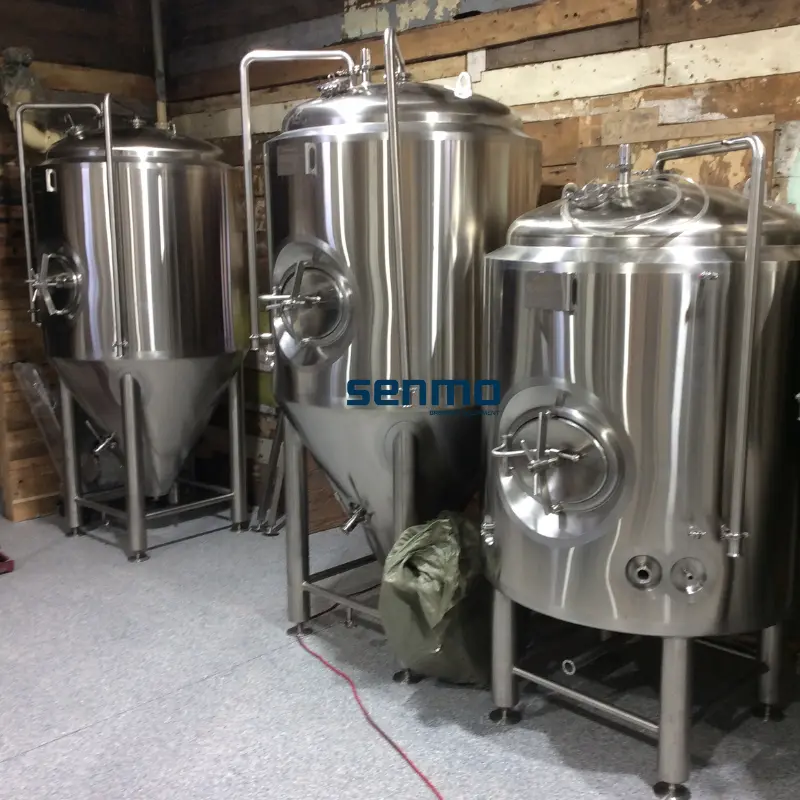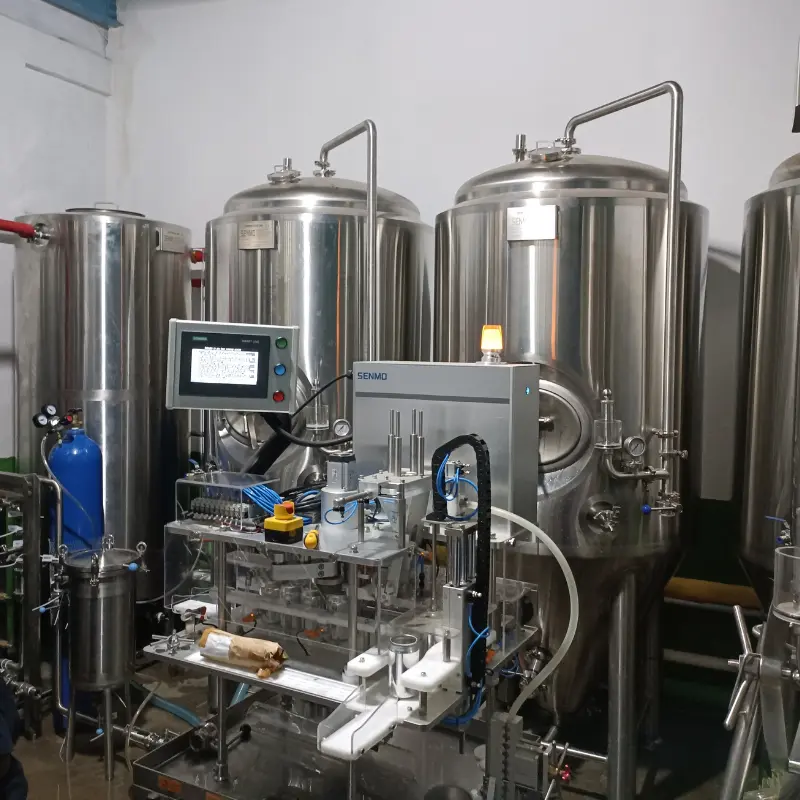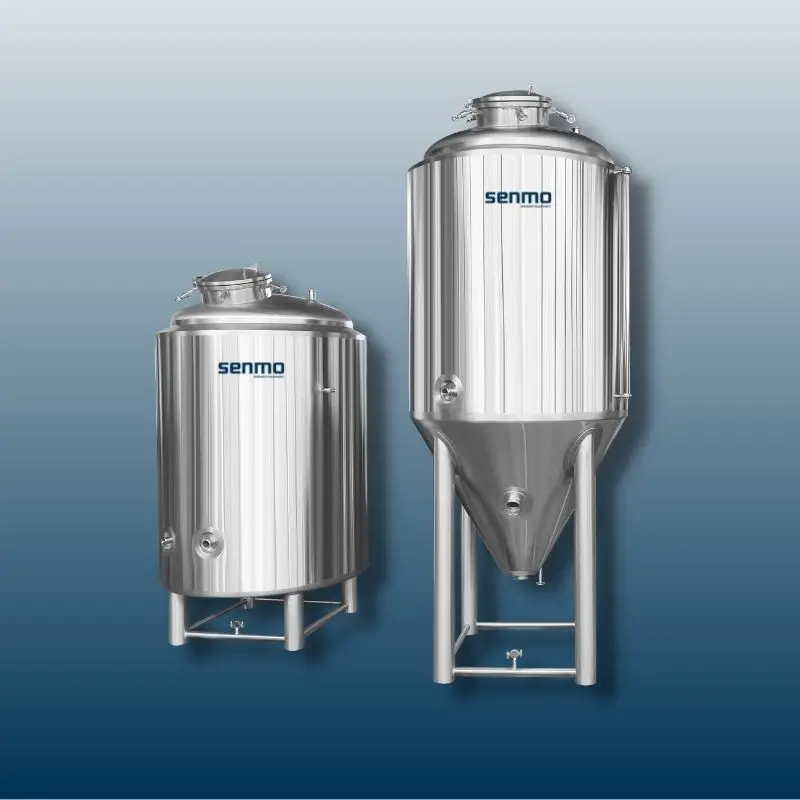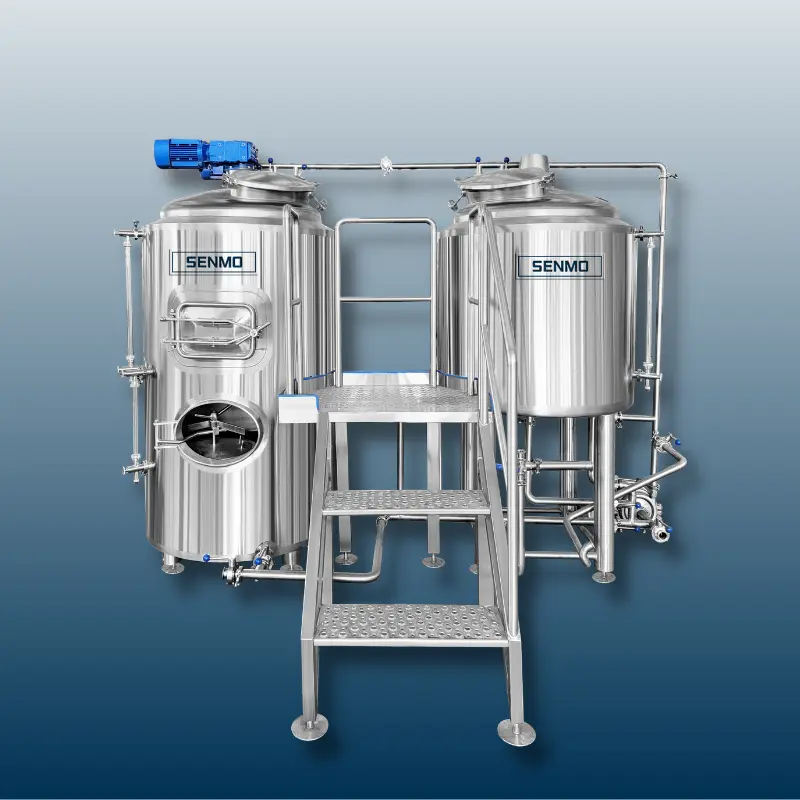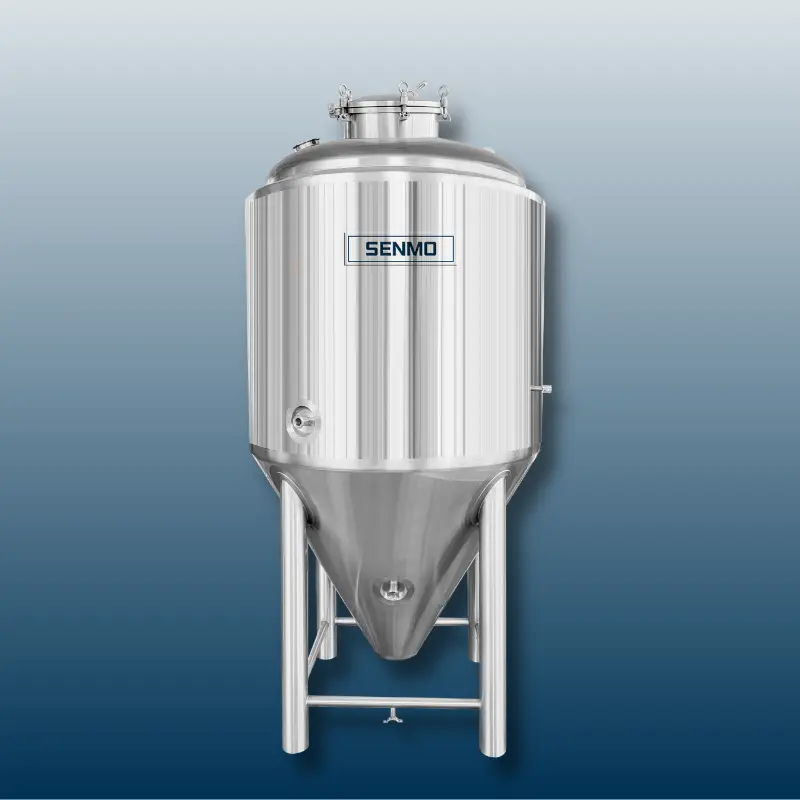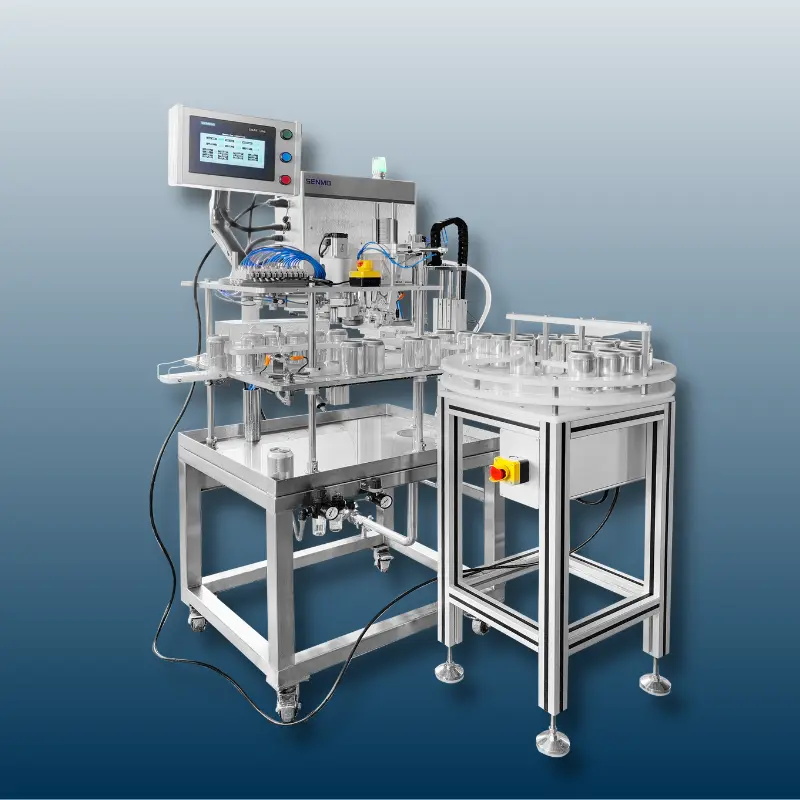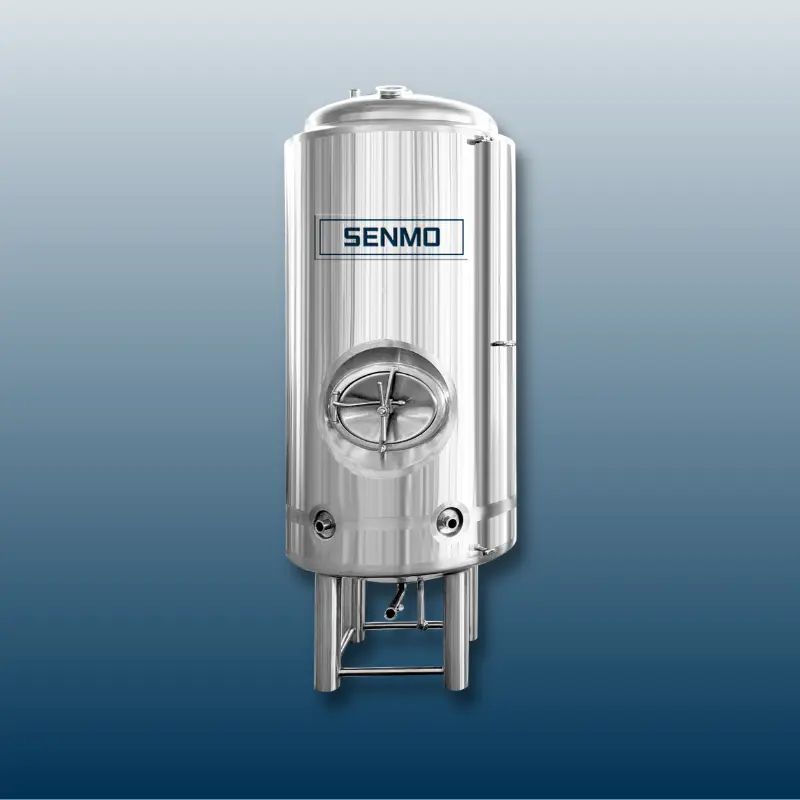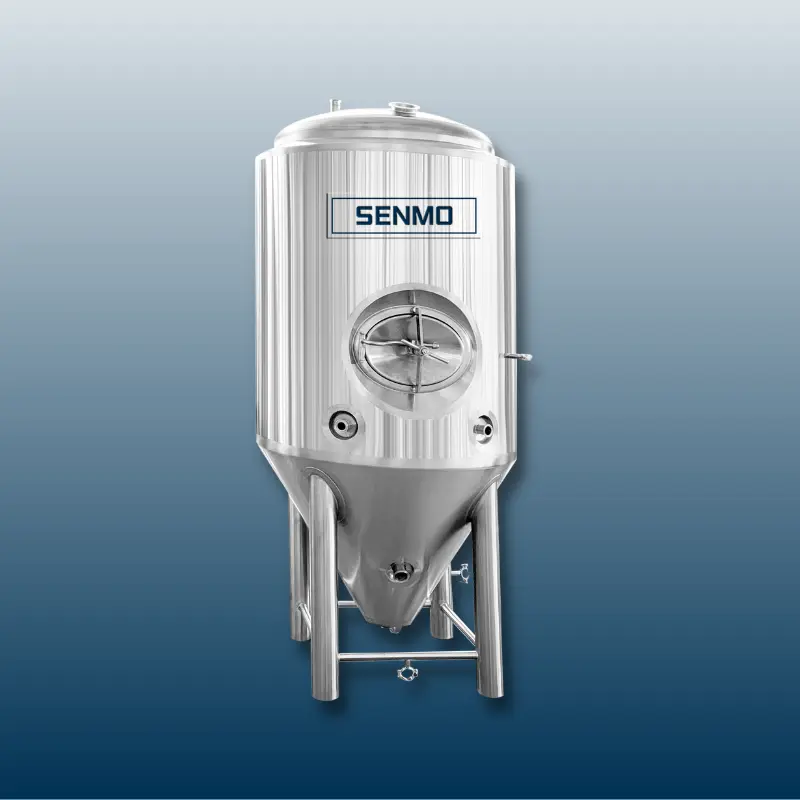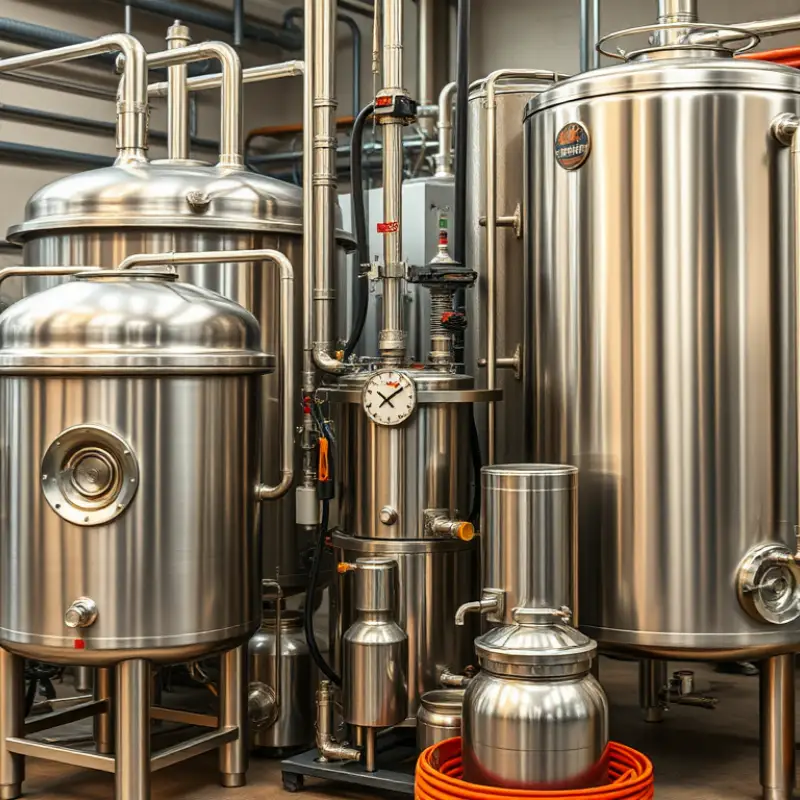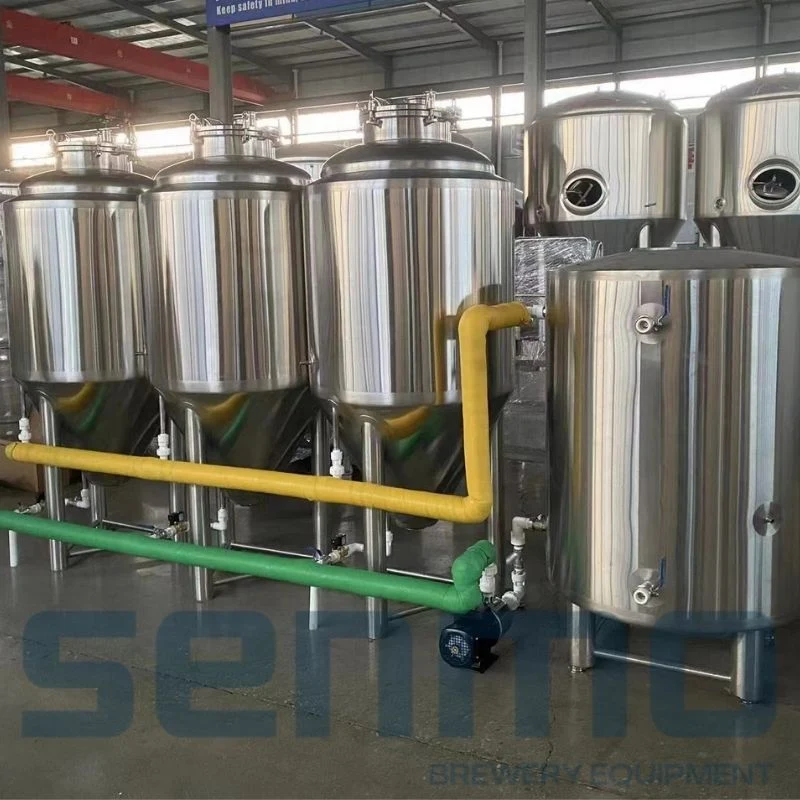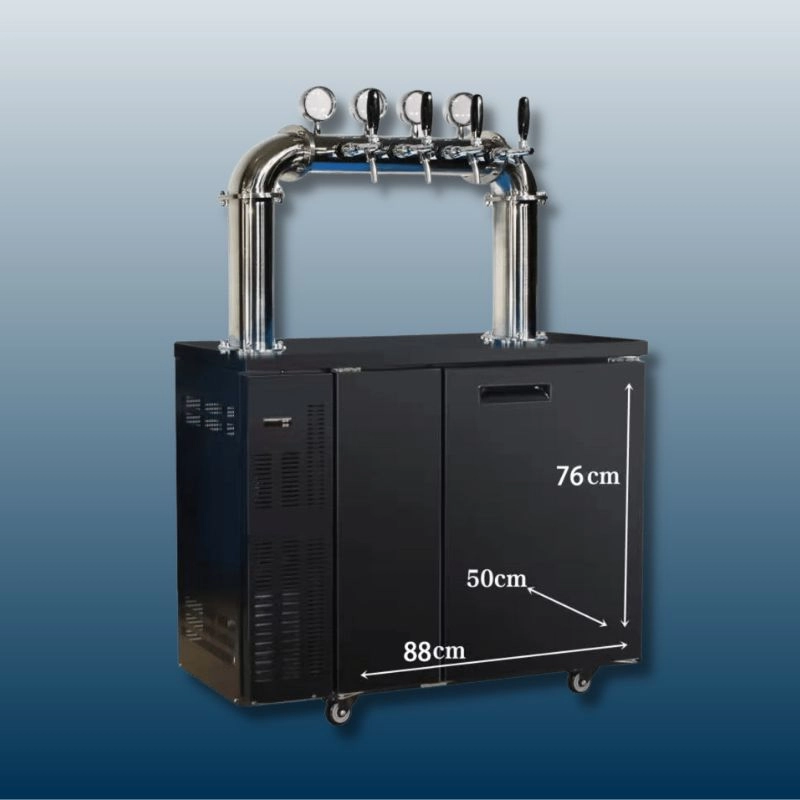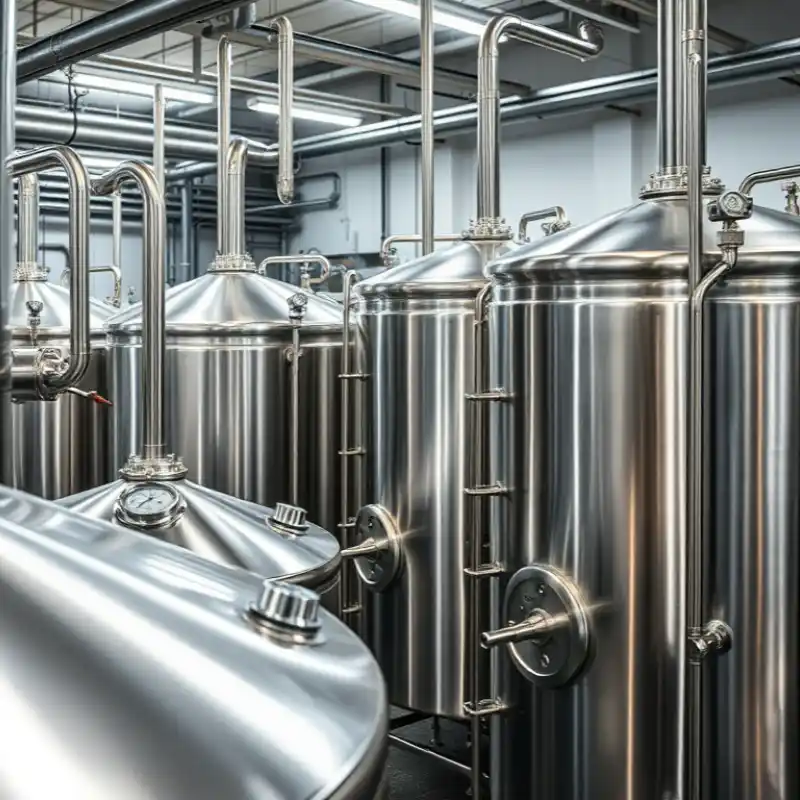In the microbrewing industry, producing high-quality beer is paramount. To achieve this, brewers rely on a variety of equipment, of which barley malt mills are an integral part.
Barly malt grinder for microbrewery

A barley malt grinder is a device specially designed for crushing, grinding or grinding barley malt into powder or granule form. This process is one of the key steps in the brewing process, in which barley malt is processed into a form that can be used for wort preparation.
Barley malt mills generally consist of one or more pairs of rollers, the distance between which can be adjusted to control the fineness of the particles being ground. As the barley malt passes through the gaps between these rollers, the rollers break and grind it to the desired grind.
The purpose of this process is to grind the barley malt into small particles so that the starches and sugars can be more easily extracted in subsequent brewing steps. These sugars will play a key role in the wort preparation and fermentation process, which ultimately produces the alcohol and flavor of the beer.
Therefore, the barley malt grinder plays a very important role in the brewing industry, it helps to ensure the consistency and effectiveness of the malt, which affects the quality and flavor of the beer. Different models of barley malt mills can be adapted to different sizes and types of breweries, but the basic principle is similar, that is, the rotation of the drum to break and grind the barley malt.
Raw material crushing: the contact area between malt content and water can be increased through crushing, so that starch can rapidly absorb water and expand, gradually decompose, and increase the contact area with enzymes. The hydrolase system contained in malt is free during saccharification, accelerating the leaching of soluble substances, thus promoting the dissolution of refractory substances. It will not only affect the subsequent saccharification effect, wort filtration and sugar extraction, but also affect the flavor and taste of later beer.
Dry crushing is the most commonly used traditional crushing method, which is applicable to small breweries of about 2 tons. The selected malt with impurities removed is directly put into the grinder for crushing, and the crushed malt powder is stored in the malt powder bin. This method requires simple equipment and easy operation. The crushing effect has a direct relationship with the moisture content of malt. Generally, the moisture content of malt is 6%~8%. If it is too high, it is not easy to crush, but forms a thin slice. If it is too low, it is too easy to crush, which is not conducive to filtering.
conditional craft breweries.
Double roll malt crusher
The opposite roll malt crusher is mainly used in small brewing workshops or beer houses. It is composed of blanking port, baffle, opposite roll, conveyor, discharge port and other parts. It crushes malt through the shear force and extrusion force generated by the relative reverse rotation of two rollers. The diameter of the roller is the same, and the maximum is 250mm. The material is cast iron or chrome nickel roller processed by centrifugal casting process. The two rollers are divided into driving wheel and passive wheel. In the process of malt crushing, the crushing effect can be adjusted by controlling the feeding speed and adjusting the roller spacing through the feeding baffle.
Straight through soaking humidifying pulverizer
The straight through soaking humidifying pulverizer is a malt crushing equipment widely used in craft breweries. It is composed of a soaking tank, a crushing box and a power box. After crushing, it can ensure the integrity of the wheat husk and the good crushing of the malt contents. During the crushing process, attention should be paid to the speed, spacing and material water ratio of the feeding rollers.
How to control the quality in malt crushing? The control of malt crushing degree is the focus we need to pay attention to.
After the malt is crushed, the percentage of hull, coarse grain, fine grain, coarse powder and fine powder in the mass of material powder is called the degree of crushing, which is an important value to measure the degree of malt crushing. The adjustment of degree of pulverization is mainly based on the solubility of malt, saccharification method and wort filtering equipment.
Malt solubility
The well dissolved malt has loose endosperm tissue and is rich in hydrolase, which is very convenient for saccharification and easy to crush. The degree of pulverization has little effect on the extraction rate of malt; Malt with poor solubility has hard endosperm, less hydrolase, and is difficult to grind and saccharify. The degree of pulverization has a greater impact on the extraction rate of malt. Therefore, when crushing, it should be properly fine, and the best state is to let the malt break without breaking.
Mashing method
When extracting saccharification or rapid saccharification, the degree of pulverization should be greater; The traditional boiling saccharification method can reduce the degree of pulverization.
Wort filtration equipment
The filter tank is used for filtering. The wheat tank is used as the filter layer, and the wheat husk is used as the filter medium. The wheat husk is required to be as complete as possible, so the malt should be roughly crushed. The filter press is used for filtering. Polypropylene filter cloth is used as the filtering medium. There is no need to protect the wheat husk during crushing. Therefore, the crushing should be thin, but not too thin.
Tips
For small and medium-sized craft breweries, the following issues should be paid attention to during dry crushing:
① The malt can be used immediately after being powdered. It can not be stored for a long time or overnight
② During the crushing process, timely sample the malt crushing situation, and adjust the roll spacing according to the situation to ensure uniform crushing.
③ 5-10 minutes before crushing, add proper amount of water to wet the malt
④ The burnt fragrant malt and black malt cannot moisten the water, and must be finely crushed
⑤ Crush the malt and make it smaller to increase the extraction rate
⑥ Wear a mask when crushing, and do a good job in hygiene and safety
FAQ
1. What is a barley malt grinder, and why is it important for a microbrewery?
A barley malt grinder is a piece of equipment used to crush or grind malted barley, a key ingredient in the brewing process. It is essential for breaking down the barley into smaller particles to facilitate the mashing and brewing processes.
2. How does a barley malt grinder work?
A malt grinder typically consists of two or more rollers that crush the malted barley between them. The malt is fed through the gap between the rollers, and as they rotate, the malt is crushed into smaller particles.
3. What are the benefits of using a malt grinder in a microbrewery?
Using a malt grinder ensures uniform particle size, which leads to better extraction of sugars during mashing. This, in turn, results in improved flavor consistency and overall beer quality. It also allows for more efficient lautering and sparging processes.
4. What types of malt grinders are available for microbreweries?
There are various types of malt grinders available, including two-roller mills, three-roller mills, and hammer mills. Each type has its advantages and is suitable for different brewery sizes and production requirements.
5. How do I choose the right malt grinder for my microbrewery?
When choosing a malt grinder, consider factors such as the size of your microbrewery, your production volume, the types of beer you brew, and your budget. Consulting with malt grinder manufacturers or experts can help you make an informed choice.
6. Is maintenance required for a malt grinder?
Yes, regular maintenance is essential to keep your malt grinder in good working condition. This includes cleaning, inspecting rollers for wear, and lubricating moving parts as needed.
7. Can a malt grinder handle different types of malted barley?
Most malt grinders are designed to handle a variety of malted barley types, including base malts and specialty malts. However, it's essential to adjust the gap between the rollers to accommodate different malt types and milling requirements.
8. Is it possible to control the fineness of the malt grind?
Yes, malt grinders typically allow you to adjust the gap between the rollers to control the fineness of the malt grind. This flexibility is crucial for achieving the desired consistency and efficiency in the brewing process.
9. Can a malt grinder be used for other grains besides barley?
Some malt grinders can be used for other grains, such as wheat, rye, or oats, depending on their design and capabilities. However, it's essential to check the manufacturer's guidelines for compatibility.
10. Is it possible to automate the malt grinding process?
Yes, some malt grinders can be integrated into automated brewing systems, allowing for precise control and consistency in the milling process.
A malt grinder is a valuable tool for microbreweries, as it plays a crucial role in ensuring the quality and consistency of your beer. By understanding how to choose, use, and maintain this equipment, you can enhance your brewing process and produce high-quality craft beers.

